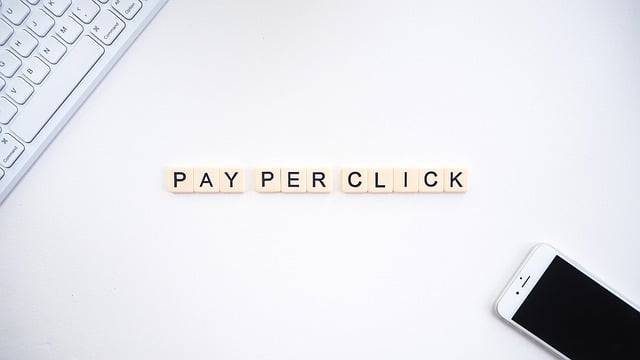Applying how to optimize SEO on Page for a website is not as easy as imagined. Of course, if done carefully, it will pay off. On-page SEO is a factor that can influence page rank.
The better the optimization is done, the greater the chance of the web page appearing. Of course, if your website appears on the first page of search results, the possibility that the website will be visited even greater.Introduction:
On-page SEO optimization is the key to getting good rankings in search engine search results. By optimizing the elements within your website, you can increase the visibility, appeal, and relevance of your content in the eyes of search engines and visitors. In this article, we will discuss the important steps in on-page SEO optimization that you can implement to achieve better results in online search.
Here’s How to Optimize SEO on PageThe more visitors, the greater the opportunity to follow or buy services and products. In essence, this optimization is an effort to increase website traffic.
Optimize SEO on Page
1. Keyword Research
Keyword research is an important step to determine keyword difficulty, search volume, and potential traffic. Identify keywords that are relevant to the topic of your page. Use a keyword research tool like semrush or ahrefs.
2. Page Title Optimization (Title Tag)
The page title is the first part that is judged by search engines, if the title does not match the content of the article, then the article will not be right on target. Use your primary keyword within the page title, but keep the title informative and interesting. Limit titles to about 70 characters to ensure a good display in search results.3. Meta Deskripsi (Meta Description):
A meta description is a short snippet that appears below the page title in search results. Create a description that clearly describes the content of your page. Use keywords naturally and create compelling descriptions to get users interested in clicking on your page.
4. SEO-Friendly URLs
Create URLs that are easy to understand and contain keywords if possible. Avoid using unnecessary characters and try not to make the url too long. Descriptive URLs help search engines and visitors understand the content of the page better.
5. High-Quality Content
High-quality content is a key factor in SEO optimization. Create informative, useful, and original content. Use subheadings (heading tags) to divide content into more organized sections. Include images, videos, and graphics where relevant to enrich the content.
6. Use of Heading Tags:
Use heading tags (H1, H2, H3, etc.) to give structure to the content. The order is H1 for main headings and other headings for subheadings. This helps visitors and search engines understand the hierarchy of information on your page.
7. Internal Linking
Link to pages within your site with internal links. This helps visitors explore the content further and also helps search engines understand the relationship between the pages on your site.
8. Image Optimization
Provide image file names that are descriptive and contain keywords if possible. Try adding the “alt text” attribute to provide keyword information about the image. This helps search engines understand the relationship between your image content and the article.
9. Page Speed
Make sure your site has fast load times. Compress images and other resources, and use caching techniques to reduce page load times. Use plugins to help speed up the loading of your website pages. Web speed will have a big effect in terms of Optimize SEO on Page. Check your website speed here : PageSpeed
10. Responsive and Mobile-Friendly
Make sure your site design is responsive, so that it performs well on mobile devices. Responsiveness is an important factor in search rankings and user experience. Learn about UI/UX for greater insight about website.
11. Data Structure (Schema Markup)
Use schema markup to give search engines more detailed information about your type of content. It can improve the appearance of search results with special features, such as star reviews, local seo or event details.
12. Link Quality (Outbound Links)
Link to credible sources relevant to your topic. Quality outbound links can provide added value for your visitors. Consider linking to sites that are not relevant to your niche. And not too many outgoing links than incoming links.
13. Routine Analysis and Optimization
Perform regular SEO analysis to monitor your site’s performance. Adjust your strategy based on the results of analysis and changes in search engine algorithms.
14. Create Simple Links
Easy-to-spell and easy-to-remember words are enough, but they can describe the site as a whole. For example, if you create a website that contains a collection of recipes typical of Javanese cuisine.
Then the URL used is just a few words. The shorter the URL, the more “likes” from search engines. By making links user-friendly and memorable. So this way of on-page SEO optimization can also make it easier for visitors to return to your website and then notify other internet users.
15. Add Keywords in URL
You can imagine what if a website page containing a recipe for “coconut milk” with the keyword “coconut milk” has a URL that does not match the search. Of course, website visitors also find this strange.
16. Using LSI Keywords
When a search engine presents a keyword it has suggested to a user, it targets the main keyword in the title and then checks if it is relevant to the content of the page.
If the title found does not match the content of the content, then the search engine will look for LSI keywords on the page to find related words or sentences.
17. Create Long Content
The next way to optimize SEO on Page is to create a long blog. Why bother writing long articles or blogs?
This is done because basically, long writing can contain more LSI keywords at once and can be seen as a comprehensive explanation or explanation.From some reader questions about something you conveyed on the page. The number of words that can be more optimal for SEO is still debated among SEO experts from year to year.
18. Using Keyword Heading
The next way to optimize SEO on Page is to use the heading format. Keywords that appear at the beginning of the title are better than placing article keywords in the middle or at the end of the title.
For example, delicious food recipes, how to make delicious dishes. Search engines like Google will prioritize pages with the title “Good Food Recipes”.
19. Optimize Titles
There are two things Click-Through Rate can be increased. Both of these are the use of numbers in the title of the page article and the use of parentheses or characters for the addition of words to the title. For example, “19 Ways to Increase Business Income”.Using the SEO.
Those are some ways that you can use and apply to the website. With the 19 ways of SEO optimization on Page above, you can easily optimize and increase traffic on your website or blog.
Conclusion
Optimize SEO on Page is an important foundation in efforts to improve search rankings and optimize the visitor experience on your website. By following these guidelines and prioritizing quality content and a good user experience, you can achieve better results in the competitive world of online search. Remember that optimization results may not be instantaneous, but consistent effort will have a positive impact in the long run.
Also Read : 10 Steps How to Get Accepted to AdSense


